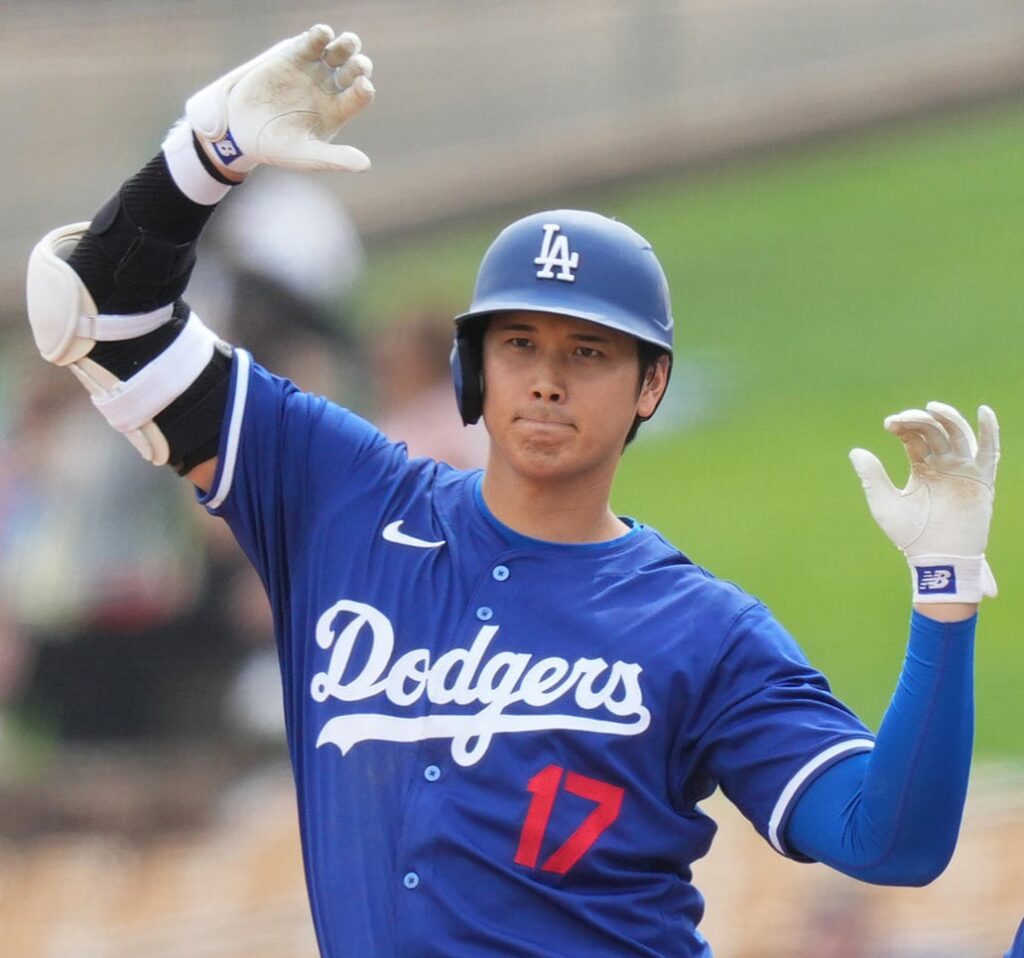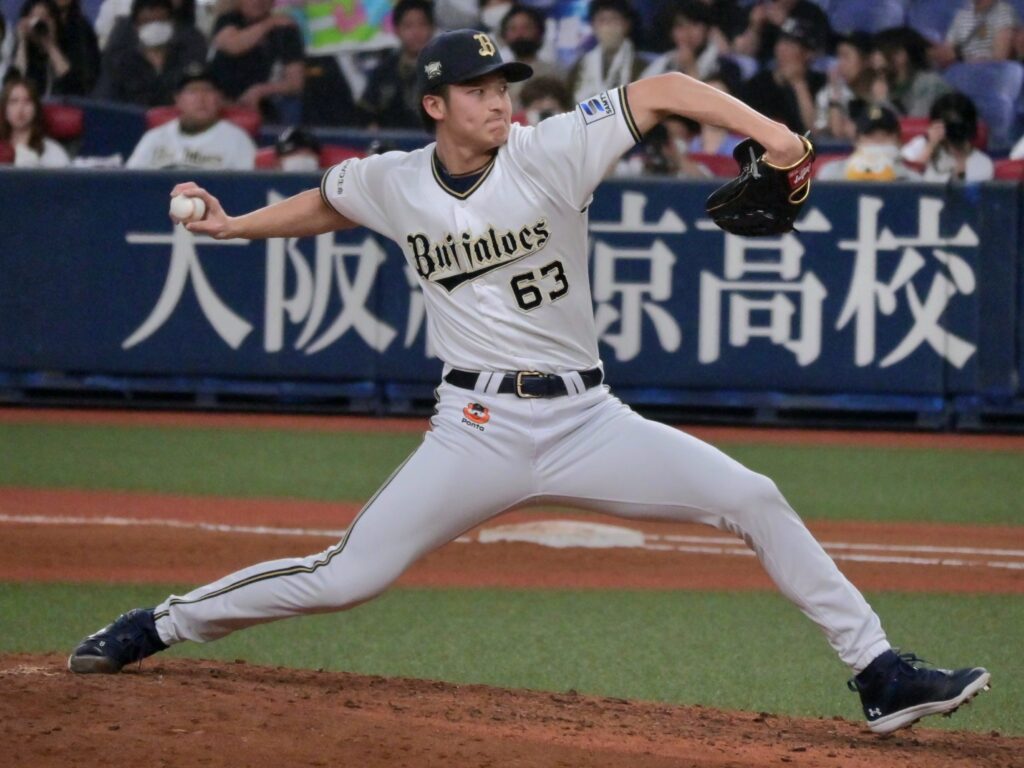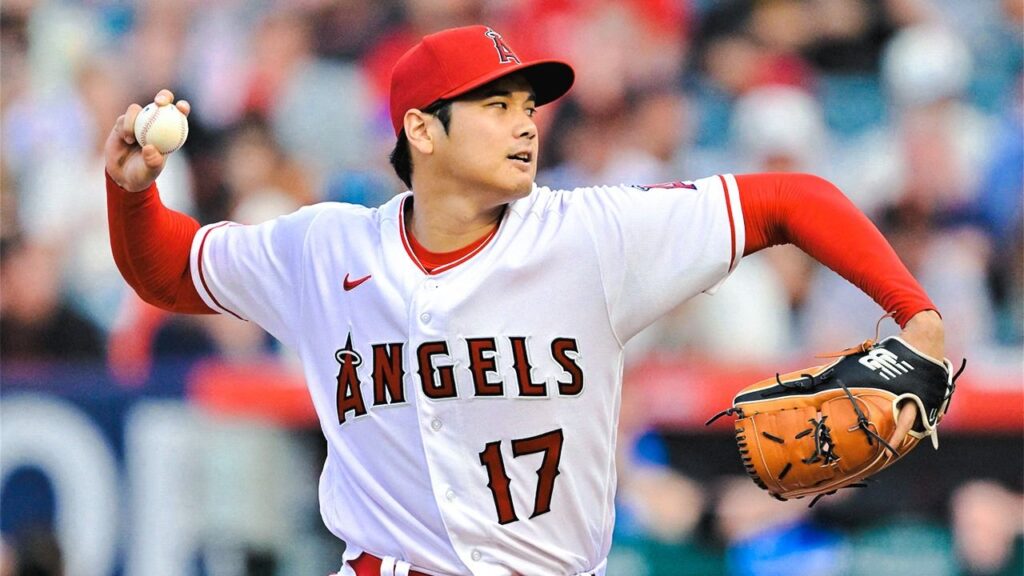
A right-handed pitcher is a pitcher who has the unique ability to throw with both his right and left arms in baseball.
This unique skill allows him to offer batters a variety of pitching patterns, giving him a huge advantage in the game.
However, mastering both throws is not easy and requires special training and strong willpower.
This article will take a detailed look at the basic definition and history of ambidextrous throwing, its advantages and disadvantages, training methods, success stories, techniques and tactics, required skills, and future prospects.
目次
What is a double throw?
Ambidextrous pitching is a very rare skill in baseball and refers to a pitcher who has the ability to throw with both their right and left arms.
This unique ability can have a huge impact on in-match tactics.
Here we will explain in detail the basic definition of Ryonage, as well as its history and development.
Basic definition of both throws
Ambidextrous means that a pitcher has the ability to throw equally effectively with either his right or left arm.
Normally, pitchers only throw with their dominant hand, but ambidextrous pitchers can switch arms depending on whether the batter is right-handed or left-handed.
This skill provides the following benefits:
- Advantage over your opponent : By pitching with your right arm to right-handed batters and with your left arm to left-handed batters, you can make it difficult for the batters to hit the ball.
- Fatigue distribution : Using both arms reduces fatigue in one arm and allows for longer innings.
- Diverse pitching patterns : Having different pitches and pitching styles with each arm allows him to attack batters in a variety of ways.
To effectively throw with both arms, it is necessary to train to maintain muscle balance in both arms and to master the correct throwing form with each arm.
History and development of ambidextrous throwing
The history of double-handed throwing is long, dating back to the 19th century.
At the time, several players had experimented with pitching with both arms, but to this day, very few ambidextrous pitchers have actually been successful.
The reason for this is the difficulty of mastering both throws and the complexity of the training involved.
-
Early two-handed pitchers :
- In the early history of baseball, there were several attempts to be ambidextrous, but most players ended up concentrating on one arm because the training required to maintain ambidexterity was so demanding that it was expected to result in better performance.
-
Ambidextrous pitchers of the 20th century :
- At the start of the 20th century, several ambidextrous pitchers attracted attention. In particular, the appearance of Pat Venditte in the American Major League Baseball reaffirmed the potential of ambidextrous pitchers. His success provided a new perspective for the development and training of ambidextrous pitchers.
-
Developing modern two-handed pitchers :
- In modern times, advances in sports science and training techniques have made it more systematic to develop ambidextrous pitchers. In particular, ambidextrous pitcher development programs have been introduced in American college baseball and Japanese high school baseball, and some players have been successful.
The development of ambidexterity requires not only the player’s own efforts but also the expertise of the coach or trainer.
There is a need to develop training programs and conduct continuous research to improve skills.
Both-handed throwing is an area that will continue to attract attention due to its special techniques and strategic advantages.
It is expected that in future player development, there will be an increase in pitchers with ambidextrous skills.
Next, let’s take a closer look at the advantages and disadvantages of double-handed throwing.
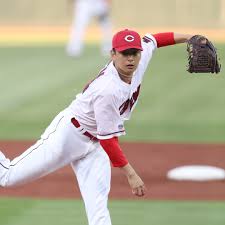
The advantages and disadvantages of double throwing
Being a two-handed pitcher is a very specific skill in baseball, and it’s important to understand its advantages and disadvantages.
In order to make the most of a ambidextrous pitcher’s abilities, training and tactics need to be designed taking these factors into account.
Here we will take a closer look at the advantages and disadvantages of double-handed throwing.
The benefits of double throwing
- Advantage over your opponents :
- Ambidextrous pitchers can throw to right-handed batters with their right arm and to left-handed batters with their left arm, making it very difficult for batters to hit. This makes it easier to exploit the batter’s weaknesses and get outs.
- Fatigue Dispersion :
- By using both arms, you can pitch longer innings without tiring one arm, which can lead to more consistent performance during a game and reduce the risk of injury.
- Diverse throwing patterns :
- Ambidextrous pitchers can use different pitches and styles with each arm, allowing them to attack batters in a variety of ways, which can disrupt the batter’s timing and increase the chances of striking him out.
- Expand your tactical options :
- By utilizing ambidextrous pitching, managers and coaches can flexibly change tactics during games, especially when using relief pitchers, as it eliminates the need to switch pitchers depending on whether the batter is left-handed or right-handed.
- Mental Advantage :
- Ambidextrous pitchers can put mental pressure on batters, as it is difficult for them to predict which arm the pitcher will use, which can lead to a loss of concentration at the plate.
Disadvantages of double throwing
- Difficulty of training :
- To master the art of throwing with both arms, you need to train both arms equally. This takes a lot of time and effort, and requires more training than a regular pitcher. It is also difficult to maintain accurate throwing form with both arms.
- Difficult tactical decisions :
- To make the most of ambidextrous pitching, tactical decisions during a game are important. High tactical understanding and instantaneous decision-making are required to determine the timing of changing pitching arms and the tendencies of batters.
- Foam Stability :
- It is very difficult to synchronize your throwing form and release point with both arms, which can lead to inconsistent throwing and poor control.
- Mental strain :
- Ambidextrous pitchers can feel mental pressure when they switch arms during a game, and making poor decisions at key moments in the game can put a huge mental strain on pitchers.
- Rules and regulations constraints :
- There may be different rules and regulations for ambidextrous pitchers depending on the league or game, such as the timing or advance notice required for changing arms, and these constraints may limit tactical freedom.
Ambidextrous pitchers have great potential in baseball because of their special skills and tactical advantages.
But there are many challenges to learning and maintaining it.
By understanding these advantages and disadvantages and developing effective training and tactics, ambidextrous pitchers can achieve great success.
Next, let’s take a closer look at how to develop a two-handed pitcher.
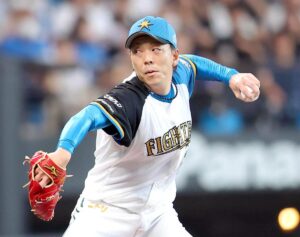
How to develop ambidextrous pitchers
Developing a two-handed pitcher requires special training methods and a step-by-step approach.
Here we will explain in detail the training methods suitable for throwing with both hands and the steps to master throwing with both hands.
Training suitable for both throwers
-
strength training :
- For ambidextrous pitchers, it is important to train to maintain a balance between the muscle strength of their right and left arms. In particular, training the muscle strength of the shoulders, arms, and entire upper body evenly will ensure the muscle strength required to throw with both arms.
- Specific training includes weight training using dumbbells or barbells, push-ups, pull-ups, etc. The key is to perform these exercises evenly on both sides.
-
Flexibility Training :
- By increasing your flexibility, you can improve the stability of your pitching form and the consistency of your release point. Stretching to increase the flexibility of your shoulders, elbows, and wrists is especially important.
- Incorporating a full-body flexibility program such as yoga or pilates can help improve balance and flexibility throughout the body.
-
Mastering pitching form :
- In order to master the correct throwing form with both arms, you need to have your form checked and corrected in detail under the guidance of a coach. Using video analysis to check your own form and identify areas for improvement is an effective way to do so.
- It is important to train your body to remember the correct pitching form through repetitive practice. In particular, pay attention to the small details of your movements, such as the release point and how you use your feet.
-
Mental training :
- Both-handed throwing requires not only technique, but also mental strength. Mental training is incorporated to deal with the pressure and stress during a match. Meditation, relaxation techniques, and image training are all effective.
Steps to mastering both throws
-
One-arm technique :
- Before learning to throw with both hands, you must first establish pitching technique with your dominant hand. The first step is to firmly grasp the basic pitching form, release point, and ball control.
-
Basic exercises for your non-dominant arm :
- Next, start basic practice with your non-dominant arm. Start with light catch balls and short throws, and gradually increase the distance. It may feel strange at first, but it is important to get used to it little by little.
-
Pitching form adjustment :
- In order to make the pitching form of the non-dominant arm as stable as that of the dominant arm, the player will practice repeatedly. Under the guidance of a coach, the player will repeatedly check and correct his/her form. Using video analysis, the player will check his/her own form and find areas for improvement.
-
Pitching Practice Repetitions :
- Practice throwing with both arms equally. Cultivate the feel of throwing with both arms through practice in a real game setting and simulation games. It is important to increase the number of throws and practice in an environment that is close to a real game.
-
Practical applications :
- Once your pitching technique is stable, you will try throwing with both hands in an actual game. Start with short innings at first, and gradually increase the number of innings. Practice the timing and tactics of changing your pitching arm depending on the situation during the game, and gain experience.
-
Feedback and Improvements :
- After the game, I receive feedback from my coach and teammates, find areas to improve, and use those in the next practice. It’s important to constantly reflect on your own pitching and work to improve your technique.
Learning to throw with both hands takes time and effort, but by following these steps and training you will improve your ability as a right-handed pitcher.
Next, let’s take a closer look at some success stories of ambidextrous pitchers.

Ambidextrous pitcher success stories
Two-handed pitchers are a rare breed in baseball, but there are some success stories.
Here we’ll take a closer look at some famous two-handed pitchers and what made them successful.
Famous ambidextrous pitchers
-
Pat Venditte :
- Pat Venditte is known as a two-handed pitcher who played in the major leagues. He is a rare player who can pitch with both his right and left arms at the same level, and he attracted a lot of attention when he made his major league debut.
- Venditte played for several teams, including the Athletics, Blue Jays, and Mariners, and was a successful relief pitcher, using his unique ability to throw with both hands, which had a major impact on game tactics and gave him an advantage over hitters.
-
Gregorio Gomez :
- Gregorio Gomez is a two-handed pitcher from the Dominican Republic who has had a successful minor league career. He was able to pitch with both his powerful right arm and his left arm, and showed great talent.
- Gomez was effective against hitters by using different pitching patterns against right-handed and left-handed batters, and his success is a prime example of the potential of a two-handed pitcher.
-
Tony Mullagan :
- Tony Maragan is a two-handed pitcher who has attracted attention in high school baseball in the United States. He has the advantage over batters by being able to throw different pitches with his right and left arms and by switching his throwing arm during a game.
- Maragan’s ability to throw with both hands led his high school team to numerous victories and made him a standout player throughout his career, and his success showed a generation of younger players the potential of the two-hander.
The key to success for ambidextrous pitchers
-
Technical excellence :
- For an ambidextrous pitcher to be successful, he needs to have equal pitching technique with both arms. It is important to match the form and release point of his right and left arms and have consistent control. To achieve this, he needs to thoroughly practice and refine his technique in detail.
-
Mental Strength :
- Ambidextrous pitchers must be mentally strong to execute the complex tactic of switching between throwing arms during a game. Their ability to make decisions at key moments in the game and withstand pressure is key to their success. It is important to incorporate mental training and relaxation techniques to strengthen their mentality.
-
Flexibility and adaptability :
- Ambidextrous pitchers need to be highly flexible and adaptable in order to use different pitching patterns for right-handed and left-handed batters. They need the judgement to instantly change their throwing arm depending on the situation during the game, and training to maintain their physical flexibility.
-
Tactical understanding and execution :
- Ambidextrous pitchers are required to have a deep understanding of game tactics and the ability to change their throwing arm at the right time. They can contribute to their team by understanding the batter’s tendencies and the flow of the game and executing the optimal tactics. In order to deepen their understanding of tactics, it is important to communicate closely with the coach.
-
Continuous feedback and improvement :
- Ambidextrous pitchers constantly review their pitches and receive feedback to improve their technique. The key to success is to actively accept feedback from coaches and teammates, find areas to improve, and apply them to the next practice.
Two-handed pitchers who possess these success factors can use their unique skills to achieve great success in baseball.
Next, let’s take a closer look at the techniques and tactics of both throws.

Techniques and tactics of double throwing
Ambidextrous pitchers have a significant advantage over batters by utilizing their unique techniques and tactics in the game.
Here, we will explain in detail the technical points of both throws and tactics that utilize both throws.
Technical points of both throws
-
Form match :
- It is important for ambidextrous pitchers to have the same throwing form with their right and left arms. This will help them maintain consistency and stability in their pitches. If the difference in form is too big, it will be easy for batters to see through it, so it is important to practice repeating the same motion with both arms.
- In particular, attention should be paid to details such as step position, release point, and shoulder opening, making the throwing motion with both arms as identical as possible.
-
Release point adjustment :
- The same release point is also very important for ambidextrous pitchers. If the release points are different between right-handed and left-handed pitchers, the ball will be easy for hitters to see. By aligning the release points, it will be more difficult for hitters to judge the pitch.
- In training, it is effective to use mirroring (a method of checking your form using a mirror) or video analysis to check and adjust your release point.
-
How to grip the ball :
- Ambidextrous pitchers need to match the way they grip the ball when throwing the same pitch with their right and left arms. This allows them to stabilize the ball’s trajectory and speed. Using different grips creates inconsistencies in the quality of the ball, which affects control.
- For example, it is important to repeatedly practice gripping a curveball or slider in the same way with both your right and left arms.
-
Physical Balance :
- For ambidextrous pitchers, training to maintain an equal balance of muscle strength between the right and left arms is essential. Strength training that focuses on one arm can lead to unstable form and injury. Maintaining a balance of the whole body is the key to achieving stable pitching with both arms.
- In addition to strength training, you can also maintain balance between your left and right arms by incorporating stretching and balance exercises to increase flexibility.
Tactics using both hands
-
Changing pitching arm depending on the batter’s left or right hand :
- The biggest tactical advantage of ambidextrous pitchers is that they can change their throwing arm depending on whether the batter is right-handed or left-handed. By pitching to right-handed batters with their right arm and to left-handed batters with their left arm, they can easily attack pitches that are difficult for batters to hit.
- In particular, it is effective for attacking right-handed batters on the inside and left-handed batters on the outside. This also increases the psychological pressure on the batter.
-
Use as a relief pitcher :
- Ambidextrous pitchers are effective when used as relief pitchers. By pitching in the middle of a game and changing their throwing arm depending on whether the batter is left-handed or right-handed, they can disrupt the rhythm of the opposing batting line-up. This allows them to get outs with a high probability even in tight situations.
- Managers are required to be flexible in using ambidextrous pitchers depending on the opposing team’s batting order and pinch-hitting strategy.
-
Improving endurance by dispersing fatigue :
- By utilizing ambidextrous throwing, you can spread out the fatigue of your pitcher. For example, by pitching with your right arm in the early stages of a game and switching to your left arm in the middle stages, you can reduce fatigue in one arm and pitch longer innings. This allows you to use your team’s pitching resources more efficiently.
- As an overall game strategy, you can take advantage of the endurance of your ambidextrous pitchers to give yourself an advantage in the game.
-
Utilizing a variety of pitching patterns :
- Ambidextrous pitchers can use different pitches and styles with their right and left arms. For example, by throwing fastballs and sliders with their right arm and curveballs and changeups with their left arm, they can attack batters in a variety of ways. This can disrupt the batter’s timing and increase the chances of striking him out.
- It is important to have the same grip and pitching form for each pitch on both hands.
Two-handed pitchers can have a huge impact on a game by utilizing their unique skill set and tactical advantage.
By mastering technical points and refining tactics, ambidextrous pitchers can play at an even higher level.
Next, let’s take a closer look at the skills required of a switch-throwing pitcher.
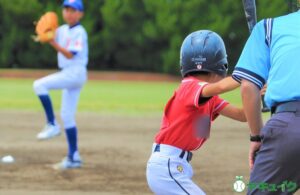
Skills required for a two-handed pitcher
Ambidextrous pitchers are required to have more advanced skills and mental strength than regular pitchers.
In this section, we’ll take a closer look at the flexibility, adaptability, and mental toughness required of a two-handed pitcher.
Flexibility and adaptability
-
Physical Flexibility :
- Physical flexibility is very important for ambidextrous pitchers. In order to throw the ball equally with both the right and left arms, it is necessary to maintain high flexibility in the shoulders, elbows, and wrists. This will allow for consistency in the pitching form and stability in the release point.
- Regularly doing flexibility exercises such as stretching, yoga or pilates can help keep your body in balance and prevent injuries.
-
Technical flexibility :
- Ambidextrous pitchers need technical flexibility to be able to change their throwing arm depending on the batter and game situation, including the ability to learn and use different pitches and styles with their right and left arms.
- For example, by being able to throw a fastball and slider with your right arm and a curveball and changeup with your left arm, you can attack batters in a variety of ways.
-
Tactical Adaptability :
- Ambidextrous pitchers are required to be able to flexibly change their tactics depending on the situation during the game, respond quickly to the instructions of the manager or coach, and read the tendencies of the batter and the flow of the game.
- It is important to have the adaptability to remain calm and make appropriate decisions even in emergencies or unexpected situations during a match.
Mental strength
-
concentration :
- Ambidextrous pitchers need to concentrate on switching between their right and left arms during a game, which forces them to focus on their form, release point, pitch type, etc.
- Incorporating meditation and mental relaxation techniques can help you stay focused during a match.
-
Stress resistance :
- Because two-handed pitchers have more responsibility and expectations than regular pitchers, they need to be stress-resistant and able to withstand the pressure and tension of a game.
- It is important to acquire stress management skills through mental training. For example, practicing stress relief techniques such as deep breathing and visualization can help relieve tension.
-
Self-trust :
- Ambidextrous pitchers must have a strong sense of self-confidence in their abilities and be confident in their ability to play without the anxiety or fear of failure when switching arms.
- It is important to remember past successes and maintain a positive mindset that affirms your abilities. Feedback from coaches and teammates can also help you build self-confidence.
-
Calmness during the match :
- Ambidextrous pitchers are required to remain calm at key moments in a game, especially when the flow of the game changes suddenly or the batter’s tactics change, and calm judgment can make the difference between winning and losing.
- In order to stay calm, it is important to prepare thoroughly before the match and think about how to respond to every situation. Mental training to control your emotions during the match is also effective.
There are many different skills required of ambidextrous pitchers, but by improving these abilities they can maximize their performance in games.
By developing a balance of flexibility, adaptability, and mental strength, ambidextrous pitchers can play at an even higher level.
Next, let’s take a closer look at the future prospects for ambidextrous pitchers.
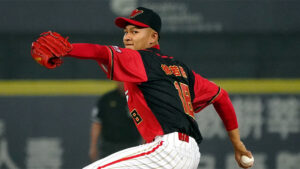
Future outlook for ambidextrous pitchers
Being a two-handed pitcher is a very unique skill in baseball, and it’s an interesting challenge to consider its future prospects.
Here, we will take a closer look at the future potential of ambidextrous pitchers, as well as the spread and challenges of ambidextrous pitching in the baseball world.
Future potential of ambidextrous pitchers
-
Potential performance improvements :
- Ambidextrous pitchers have an advantage over batters because they can pitch to right-handed and left-handed batters. By further honing this technique, a pitcher’s performance can improve dramatically.
- For example, you can effectively use a tactic such as attacking the inside by pitching with your right arm against a right-handed batter, and attacking the outside with your left arm against a left-handed batter. This makes it easier to control the batter’s batting.
-
Diversify your tactics :
- The presence of ambidextrous pitchers can diversify a team’s tactics. For example, when used as a relief pitcher, changing the throwing arm depending on whether the opposing batter is left-handed or right-handed can broaden the range of tactics available against the opposing batter.
- Also, as a starting pitcher, you can change your pitching arm depending on the flow of the game, allowing you to pitch long innings stably. This allows you to use the pitching resources of the entire team efficiently.
-
Introducing new training programs :
- The introduction of a new program to develop ambidextrous pitchers is expected to help more players master the technique, including equal training for right and left arms and special exercises to maintain flexibility and strength balance.
- Baseball academies and development teams are actively adopting programs to develop ambidextrous pitchers, with the potential to produce future star players.
The popularity of ambidextrous pitching in baseball and the challenges it poses
-
Potential for adoption :
- As the number of successful ambidextrous pitchers increases, it is possible that ambidextrous pitching will become more popular throughout baseball. In particular, as younger players learn the skills to use ambidextrous pitching, it is expected that many ambidextrous pitchers will play an active role on the professional stage in the future.
- In addition, by spreading awareness of the appeal of ambidextrous pitching through the media and social media, fans will become more interested and the existence of ambidextrous pitchers will become more widely recognized.
-
Technical challenges :
- To master ambidexterity, there is the technical challenge of matching the throwing form of the right and left arms, and continuous training and coaching are essential to overcoming this challenge.
- In addition, adjusting the release point and mastering pitch types also take time and effort. Overcoming these technical challenges will improve ambidextrous pitchers’ technique and stabilize their performance in games.
-
Mental challenges :
- Ambidextrous pitchers are more susceptible to the mental pressure of switching arms during a match, so it is important for them to develop mental training and stress management techniques.
- In order to maintain composure and focus during a match, regular mental checks and relaxation techniques are necessary. Overcoming mental challenges will enable ambidextrous pitchers to perform more consistently.
-
Establishing rules and regulations :
- Another issue is the development of rules and regulations for ambidextrous pitchers. For example, different leagues may have different rules regarding the timing of changing arms or whether prior notice is required.
- There is a need to unify these rules and create an environment where ambidextrous pitchers can smoothly change their throwing arm during a game.
Ambidextrous pitchers bring new possibilities to the world of baseball with their unique skills and tactical advantages.
By overcoming the technical and mental challenges and implementing appropriate development programs and rule changes, the future for ambidextrous pitchers will be brighter than ever.
